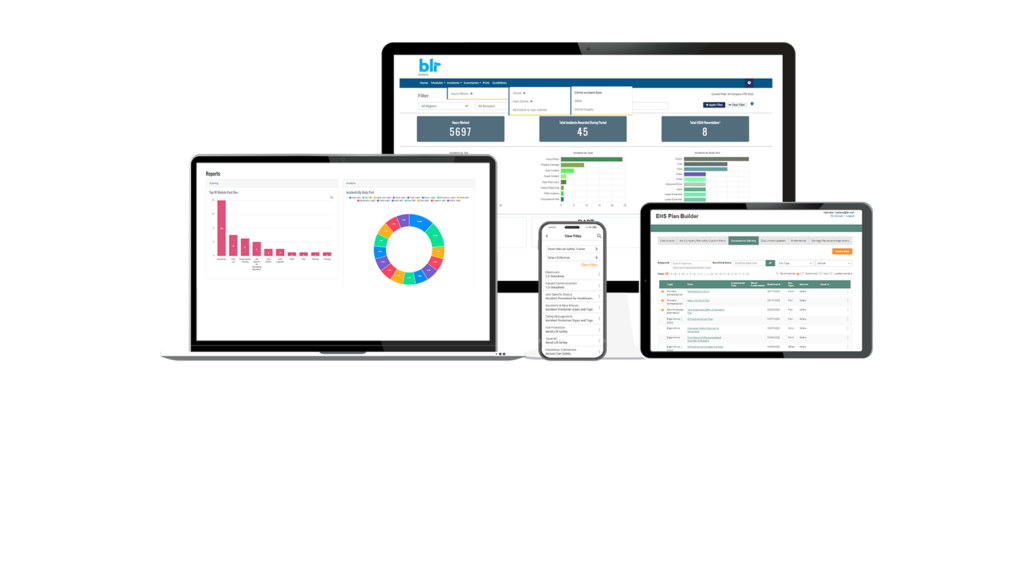
Why you’re at risk without a safety management system
Save your company money while saving lives
The National Safety Council reports the total costs relating to workplace injuries added up to $167 billion in 2021. This breaks down to $1,080 per worker and $42,000 per medically consulted injury. If you could save your company—and its employees—from even just one workplace injury, that would more than cover the cost of a safety management software system. Having a safety management system in place isn’t about how much it costs but about how much it saves.
Sobering statistics aside, safety is so much more than preventing danger; it’s about managing incidents that have already occurred, training employees at all levels on how to handle hazards safely, and staying on top of government-mandated regulations and standards to keep your workforce safe.
Does your company keep track of all of these moving parts? An efficient way to do so is with a safety management system, which helps keep a record of all safety-related items at your company. Many organizations have systems in place to manage some of these processes but not an all-encompassing, integrated program that facilitates a seamless approach to safety tracking. If your company is considering a more integrated solution, you must demonstrate its value as an investment rather than a cost.
The risk of not having an integrated safety management system
You come into work one day only to be greeted by an Occupational Safety and Health Administration (OSHA) inspector. You know the visit was triggered by a recent incident, and your organization must answer to the agency about what happened. Do you have the issues correctly documented for the inspector to see? Are they in chronological order from the date the incident occurred to any corrective actions that were taken and any follow-up paperwork or training that was completed?
Being unprepared on the day of an inspection can work against you in OSHA’s investigation of an incident. OSHA typically isn’t required to give advance notice as to when an inspector will arrive at your facility for an inspection, and you don’t want to be caught off guard. OSHA takes note when companies can’t provide documentation of incidents or hazards, which can hurt their audit and increase penalties and fines.
Without safety documentation in place, you face risks in other areas:
- Loss of productivity: When an employee is hurt, production stops on activity that drives the business forward and shifts focus to determine the cause of the incident and what corrective actions must be taken. The Centers for Disease Control and Prevention (CDC) Foundation reports that productivity losses because of a lost employee cost U.S. employers $225.8 billion every year.
- Worker injuries: It takes time to replace an injured employee. The Bureau of Labor Statistics reports that injury cases increased by 6.3% to 2.2 million in 2021.
- Equipment repair: The American Society of Safety Professionals reports that the indirect costs of injuries, such as the cost of repairing equipment, could be as much as 20 times the direct costs. This includes property damaged as the result of an incident and investigating the items and location involved.
- Potential fatalities: More than 4,500 workers die on the job each year, according to OSHA. Handling an employee death causes financial and emotional hardship for all impacted individuals, the families, and the company. The most recent data shows the average cost of a job-related fatality is $1.07 million.
Benefits of an integrated safety management system
Besides the risks associated with not having a safety management system, there are also benefits to consider. A strong safety culture aids in employee retention and ensures product quality and customer satisfaction. It can also impact your company’s reputation by setting a good example for others in the industry.
Laying this out in your case to higher-ups will reinforce that you’ve done your research and have thought through these issues to further the company as a whole.
Keeping an ongoing log of all employee safety training, incident reports, corrective actions, and other safety documents in one, easily accessible location will make an OSHA inspection a much smoother process. Not only will it demonstrate to the inspector that your company is proactive about its safety initiatives, but it will also increase your confidence when discussing safety matters because you’ll have all the documentation needed to investigate an incident.
Making the case for safety to the C-suite
One of the most common barriers to safety management software adoption is a lack of senior management support. Getting leadership buy-in can be a struggle, and unfortunately, the consequences of not having top leaders on board with safety include insufficient budgets, a lack of assistance from other functional areas, conflicting priorities, and unnecessary obstacles. According to Andrew Razhegi, founder and managing director of Strategy Labs, Inc., “The single most effective way for safety professionals to get the attention of senior management would be through the identification of how safety systems can not only protect the health and well-being of people, but also how they can, in fact, grow the bottom line.”
This guide from BLR® will help you understand the key benefits of environment, health, and safety (EHS) management systems, like BLR’s EHS Hero®, and how you can effectively communicate them to help gain support from leadership for your safety initiatives.
Reinforcing a culture of safety
The decision to use a safety management system is about more than cost. It’s about retaining quality employees, and to do so, you must demonstrate that your company provides a top-down commitment to not only their professional success but also their safety. It also reinforces how your company strives for continual improvement. A safety culture isn’t developed as a reaction to an incident or even a near-miss incident. It develops when a company weaves safety into the fabric of its policies and procedures for every employee before any incidents occur as an active effort to promote everyone’s safety. A safety management system reinforces this endeavor by enabling companies to involve their staff in managing their own safety with a reporting system. Without a way to manage all these safety aspects, your company is at a higher incident risk. The best way to ensure the health and safety of all employees is through an established system that houses all safety documents in an effort to achieve safety on a regular basis, not just when tragedy strikes.



